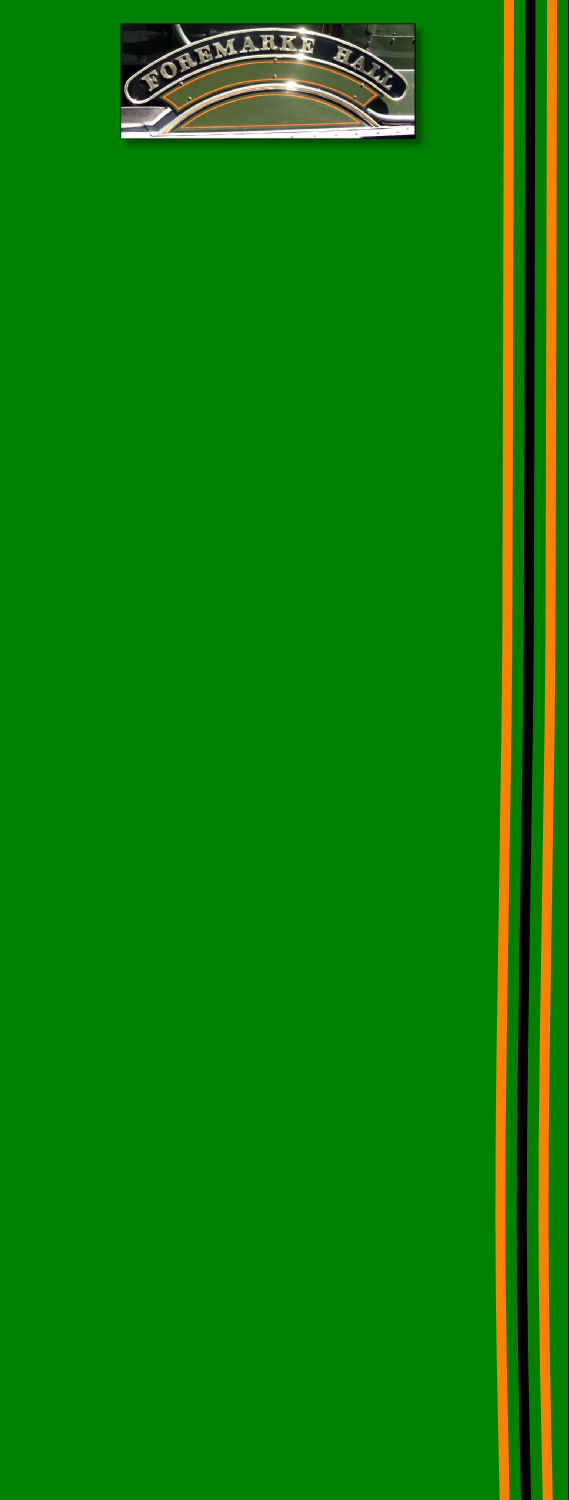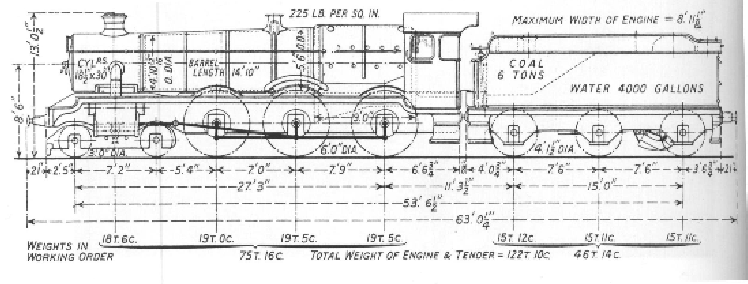


The first Hall class locomotive was introduced in 1924. It was basically a rebuild of No 2925 Saint Martin a member of the Saint class introduced in 1903. Later to be numbered No 4900 Saint Martin was fitted with 6ft 0in driving wheels instead of the Saint’s 6ft 8½ ins and the luxury of a Collett side window cab. 259 samples of this original Hall design were produced up to 1943.
F W Hawksworth took over as Chief Mechanical Engineer at Swindon in 1941 and in 1944 the first of his Modified Hall class locomotives appeared, No 6959 Peatling Hall and they were designated as the 6959 Class. The final batch were numbered 7900-7929 which included our locomotive No 7903.
The Modified Halls were outwardly similar to the original Halls but differed in several aspects, the main ones being a higher level of superheating in the boiler and the introduction of full length plate steel for the mainframes. These improvements seem to produce a freer running engine and the 79s were renowned for their turn of speed, and earned the nickname of “The Greyhounds”.
Another Hawksworth innovation was the introduction of his straight-sided tender instead of the traditional Great Western sculpted tender. This later tender type is the sort we possess and is to be seen supplying our engine with its water and coal.
Our Locomotive
During the restoration of Foremarke Hall we endeavoured to return her to “as built” condition as near as possible. However there are a few changes that have had to take place in order to meet today’s preservation requirements.
Firstly the locomotive has steam heating piped to the front buffer beam. In BR days tender engines were not fitted in this way as they would normal be turned to face the direction of travel. However today locomotives spend as much time going in reverse as going forward. Therefore in winter months the engine needs to be able to warm the coaches. We have therefore fitted the steam heating exactly as it would have been fitted to a tank engine, n the same position, using the correct shut off cock.
Secondly the locomotive is fitted with two 10x live steam injectors instead on one along with an exhaust steam injector. This was done purely, as it was significantly cheaper and simpler to do and secondly we will not be doing the high speed running that an exhaust steam injector needs to operate efficiently.
The Hawksworth tender is only one of three in existence although strangely a fourth will emerge behind No 5043 Earl of Mount Edgecombe when she re-enters service following restoration. Six Hawksworth tenders went to Barry and only two came out, the rest being sold to the steel works. No 4930 Hagley Hall from the Severn Valley Railway has the other. No 6998 Burton Agnes Hall does also have a Hawksworth tender but that came to Didcot direct from BR.
The reason this situation has arisen is that the Foremarke Hall Transport Group did in fact buy a spare set of Hawksworth tender frames from Swindon works when the works was closing. These frames were in fact almost complete and in almost ex works condition so these were used with the refurbished tender tank behind our engine. The old frames and wheels etc were then sold on and have ended up behind the Castle.
F W Hawksworth took over as Chief Mechanical Engineer at Swindon in 1941 and in 1944 the first of his Modified Hall class locomotives appeared, No 6959 Peatling Hall and they were designated as the 6959 Class. The final batch were numbered 7900-7929 which included our locomotive No 7903.
The Modified Halls were outwardly similar to the original Halls but differed in several aspects, the main ones being a higher level of superheating in the boiler and the introduction of full length plate steel for the mainframes. These improvements seem to produce a freer running engine and the 79s were renowned for their turn of speed, and earned the nickname of “The Greyhounds”.
Another Hawksworth innovation was the introduction of his straight-sided tender instead of the traditional Great Western sculpted tender. This later tender type is the sort we possess and is to be seen supplying our engine with its water and coal.
Our Locomotive
During the restoration of Foremarke Hall we endeavoured to return her to “as built” condition as near as possible. However there are a few changes that have had to take place in order to meet today’s preservation requirements.
Firstly the locomotive has steam heating piped to the front buffer beam. In BR days tender engines were not fitted in this way as they would normal be turned to face the direction of travel. However today locomotives spend as much time going in reverse as going forward. Therefore in winter months the engine needs to be able to warm the coaches. We have therefore fitted the steam heating exactly as it would have been fitted to a tank engine, n the same position, using the correct shut off cock.
Secondly the locomotive is fitted with two 10x live steam injectors instead on one along with an exhaust steam injector. This was done purely, as it was significantly cheaper and simpler to do and secondly we will not be doing the high speed running that an exhaust steam injector needs to operate efficiently.
The Hawksworth tender is only one of three in existence although strangely a fourth will emerge behind No 5043 Earl of Mount Edgecombe when she re-enters service following restoration. Six Hawksworth tenders went to Barry and only two came out, the rest being sold to the steel works. No 4930 Hagley Hall from the Severn Valley Railway has the other. No 6998 Burton Agnes Hall does also have a Hawksworth tender but that came to Didcot direct from BR.
The reason this situation has arisen is that the Foremarke Hall Transport Group did in fact buy a spare set of Hawksworth tender frames from Swindon works when the works was closing. These frames were in fact almost complete and in almost ex works condition so these were used with the refurbished tender tank behind our engine. The old frames and wheels etc were then sold on and have ended up behind the Castle.
